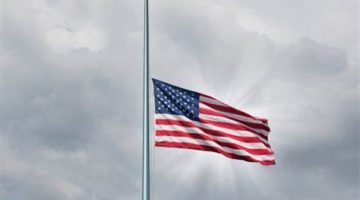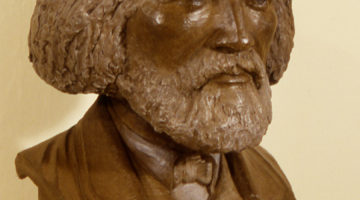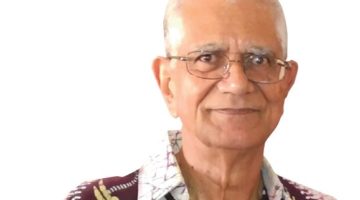A reluctance – or refusal – to even mention the word “slavery” has been around for a long time. It began to surface more prominently as several states controlled by Republican-dominated legislatures launched a culture war to, among other things, rewrite, whitewash or erase parts of United States history.
In case it has been forgotten that history includes atrocities against enslaved Africans, around four million of whom lived in the country by 1860. They were “owned” as chattel, no different from animals and goods. Their “owners” could kill them at any time for any or no reason without being prosecuted. They could be burned, mutilated, raped, whipped, shackled, imprisoned, and sold – breaking up families, separating children from parents and wives from husbands. Yet they survived and their descendants, along with others from the African diaspora, now number around 48 million or 14 percent of the population.
That is a remarkable story for celebration and for continued reflection on a system which lasted 246 years, along with examining what the consequences have been and the nation’s ongoing struggle to deal with the legacy of that painful past. However: In 2015, a Texas textbook showed a map describing “patterns of immigration” captioned “millions of workers [were brought] from Africa to the southern United States to work on agricultural plantations,” The Guardian’s Laura Isensee reported.
In 2017, Ben Carson, a now retired neurologist whom President Donald Trump appointed secretary of Housing and Urban Development during his first term, once said that there had been “immigrants who came here in the bottom of slave ships.” And he is an African American.
In 2019, then Virginia Republican Governor Ralph Northam, while running for re-election, described the first Africans to arrive as “indentured servants.” Indentureship refers to a form of voluntary work contract.
In 2019, some textbooks were referring to “involuntary migrants” who came as “indentured servants and “immigrant worker,” Cynthia Greenlee reported in Vox.
In 2021, three of the most popular textbooks from Christian-oriented publishers taught about “black immigration,” Rebecca Klein wrote in The Guardian.
In 2022, some Texas educators proposed that “involuntary relocation” of Africans should be taught to secondgrade students, Brian Lopez reported in The Texas Tribune. A social studies textbook asserted that Africans had been imported as “workers.” A Senate bill mentioned “a deviation from American values.” A proposal for a social studies curriculum asked students to “compare journeys to America, including voluntary Irish immigration and involuntary relocation of African people during colonial times.”
In 2023, new history standards incorporated into Florida’s school curriculum referred to “skills which, in some instances, could be applied for their personal benefit.”
That denial of reality enabled the demonizing of “critical race theory” and, more recently, diversity, equity and inclusion (DEI) initiatives. The mindset has now expanded from state and local political and educational jurisdictions which lumped everything under the label of “wokeness” to the national stage after President Donald Trump signed an executive order, “Restoring Truth and Sanity to American History,” on March 27.
The order puts a bull’s eye on the 178-year-old Smithsonian Institution with its complex of 21 museums located on the National Mall in Washington, D.C. It denounces the Smithsonian for promoting “Distorted narratives” such as a “corrosive ideology” that has fostered a “sense of national shame.” It has “come under the influence of a divisive, race-centered ideology” that portrays “American and Western values as inherently harmful and oppressive.”
The order singles out two museums by name. One is the Art Museum, whose exhibition, “The Shape of Power: Stories of Race and American Sculpture,” the order claims, promotes the idea that societies, including the United States “have used race to establish and maintain systems of power, privilege, and disenfranchisement,” and that “sculpture has been a powerful tool in promoting scientific racism,” advancing the concept “that race is not a biological reality but a social construct … a human invention.”
The National Museum of African American History and Culture is also cited by name but merely to note, according to the order, that it proclaims that “hard work,” “individualism” and the “nuclear family” are aspects of “White culture.” But it is the “Blacksonian,” as it is called, which is evidently the main object of Trump’s wrath.
The executive order correctly notes, with some exaggeration, that the United States has an “unmatched record of advancing liberty, prosperity and human flourishing” and that museums in the capital “should be places where individuals go to learn.” Instead, it asserts, the Smithsonian has become a place where visitors are “subjected to ideological indoctrination or divisive narratives that distort our shared history.”
The administration’s policy will therefore be to restore the Smithsonian “to its rightful place as a symbol of inspiration and American greatness – igniting the imagination of young minds, honoring the richness of American history and innovation and instilling pride in the hearts of all Americans.” In principle, it is hard to argue against such a policy but the “richness of American history” includes slavery.
To tell the whole story, the Blacksonian displays “more than 40,000 cultural and historical artifacts, including items related to slavery, segregation and the civil rights movement,” Marni Rose McFall reported on Newsweek’s Live News.
Bill Barrow of The Associated Press not only rejected the order’s contention that the Blacksonian does not reflect the declaration of the Founding Fathers that “all men are created equal.” He noted also that the order “doesn’t mention that the founders enshrined slavery into the U.S. Constitution and declared enslaved persons as three-fifths of a person for the purpose of the Census.”
The Guardian’s Charlotte Higginsreported that she toured the museum and found that it “strikes a fascinating balance between the unflinching gaze on systems of oppression and a sense of Black achievement and cultural richness that has nevertheless effloresced.”
Historian Kellie Carter Jackson, writing also in The Guardian, noted that the order also mandates the reinstallation of statues of Confederate persons and restoring the names of military bases honoring Confederate generals. Doing so “while simultaneously stripping the evidence of race and racism from the Smithsonian history museums isn’t correcting the historical record,” Jackson argued. “A nation that cannot reckon with its past, triumph and tragedy is ultimately a weaker one, puffed up with its own delusion of grandeur. There is more power in the truth than there is in a lie. The efforts in the last 50 years to give the powerless a place politically, academically and legally is not a revisionist view of American history but, rather, a move to make all of America the democratic nation it claims to be.”
However, that revisionism is exactly what is about to happen. The executive order names Vice President J.D. Vance, a Smithsonian board member by virtue of his office, as the chief whitewasher to scrub the assumed undesirable offerings that “divide Americans based on race” and remove “improper ideology.” At stake is the 62 percent of the Smithsonian’s more than $1 billion annual budget that comes from the federal government, according to Artnet News. The Blacksonian, which opened in 2016, has a budget of $51 million comprised of federal and trust dollars. Ironically, Trump praised the Blacksonian after a tour in 2017 during his first presidency, Barrow reported. He said then, “I’m deeply proud that we have a museum that honors the millions of African American men and women who built our national heritage, especially when it comes to faith, culture and the unbreakable American spirit.” As president, he has the power to impose the changes he is demanding but it is a pity that he is doing it.
The American people can handle the truth but that is not what is at stake. Denying selective aspects of history is intended to replace America’s origin story with a creation myth. A character in the French crime thriller serial “Public Enemy” pronounces, “When you bring light to darkness, you don’t know what you will see.” What happens when you bring darkness to light?













No Comment